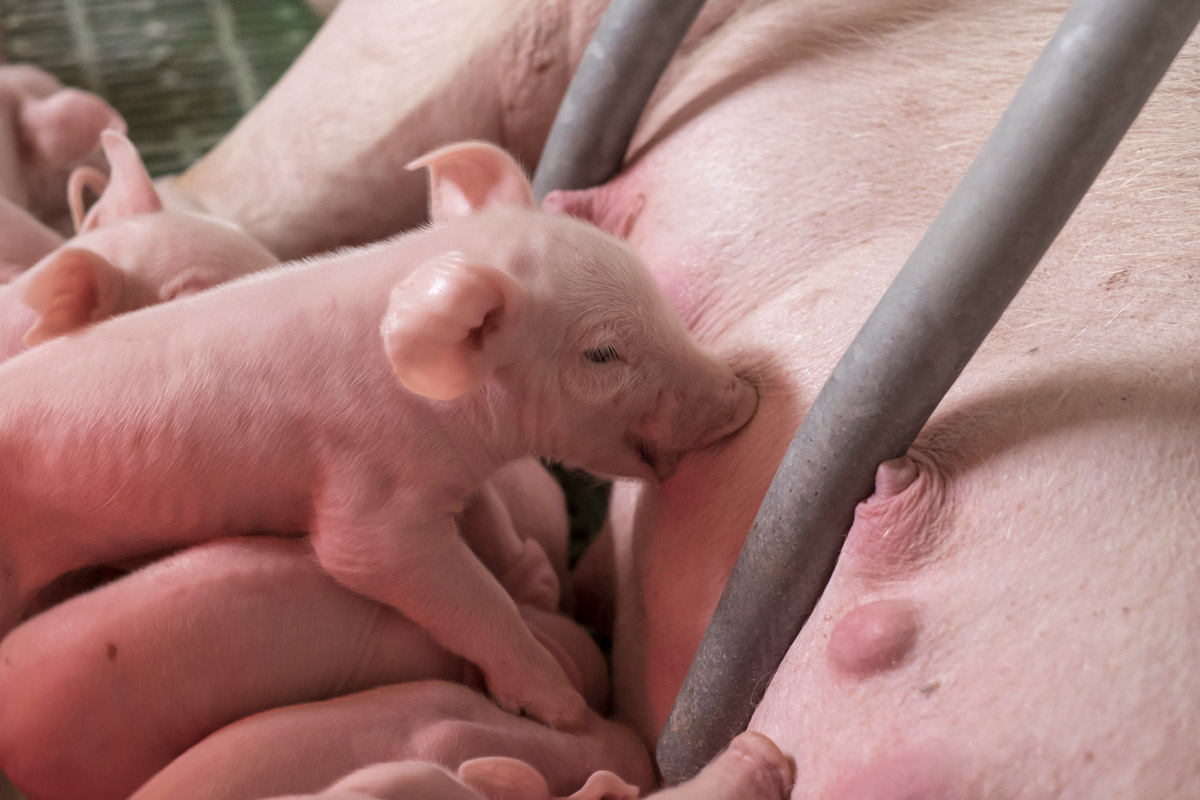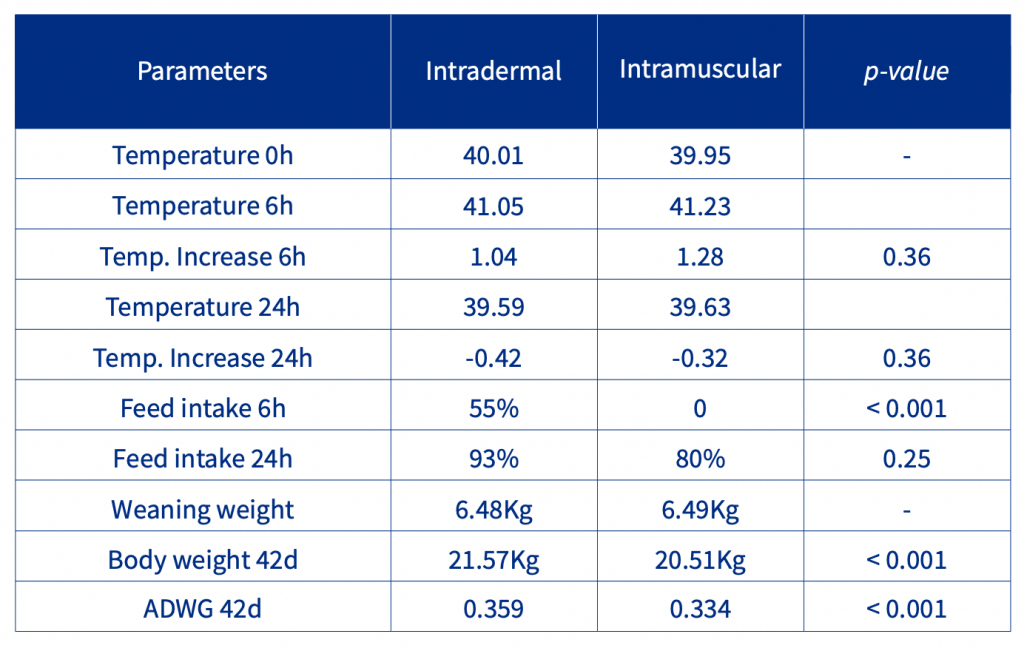
Intradermal needle-free vaccination in piglets: effects on welfare and nursery performance
A common procedure for vaccine administration for pigs has been the needle-syringe device, with intramuscular administration. However, this method is considered to be potentially painful to animals 1,2. As a consequence of a painful vaccination process, the animals can display similar physiological alterations to a febrile response and sickness behaviours such as lethargy, decreased appetite and thirst, huddling, shivering, sleepiness, reduced groomimg and exploration, uncoordinated body movements and an increase in pain sensitivity 3,4 resulting in a reduced production performance.
Introduction
The aim of the present study was to compare intramuscular injection with a needle and an intradermal needle-free vaccination process in piglets at 21 days of age by studying temperature and initial starter feeding after weaning.
Materials and methods
A total of 500 piglets, intact males and females, were individually weighed at weaning at 21 days of age, identified with ear tags and distributed between two groups according to sex and weight: intramuscular vaccination (IM- 2 ml) and intradermal needle-free vaccination (ID- 0.2 ml). After weaning, they were assigned to the nursery phase, and vaccinated against Mycoplasma hyopneumoniae and Porcine circovirus type 2 associated diseases either via the intramuscular route (IM) (n=250) or with Mhyosphere® PCV ID (n=250), an intradermal (ID) vaccine administered using Hipradermic® 3.0. The body temperature was measured at 0 (time of vaccination), 6 and 24 hours after vaccination. In order to evaluate the starter feed consumption, animals were supplied with the pre-initial feed, an iron oxide 1% as a red faecal marker. At 6- and 24-hours post-vaccination, the faecal colour was evaluated by rectal swab to identify the piglets consuming the feed (those with a red-coloured swab). The piglets were individually weighed at 42 days after weaning to assess weight gain in the nursery phase.
Results
Body temperature after vaccination was affected by the administration route and the vaccine used. It was observed a significant increase in body temperature in those animals that were vaccinated by IM route in contrast to the ones that received the vaccine by ID route.
The percentage of piglets that started feed intake at 6 h after vaccination was also affected by the administration route. Piglets in ID group started feed consumption after weaning well before the piglets in the IM group (55.0% vs. 0%, P<0.001). Nursery performance was also affected by the vaccination, the IM animals having a lower performance (Body weight [BW] and Average Daily Weight Gain [ADWG]) than the ID piglets (Table 1).

Table 1. Temperature, feed consumption and nursery performance.
Discussion and Conclusion
The present study confirms the administration route effect on pig behaviour and performance, together with the safety effect of the vaccine. The percentage of pigs in the intramuscular vaccine group that showed an increase in body temperature was higher than the percentage in the animals in the intradermal needle-free vaccination group. As a consequence of the high increase in body temperature and the painful process that intramuscular vaccination causes, the animals in this group were lethargic after vaccination.
The lethargic behaviour and pain had a negative effect on starter feed intake after weaning. In contrast, the intradermal needle-free piglets started feed intake 24h earlier than the intramuscular group. Low feed intake after weaning is a factor that negatively contributes to performance during the nursery phase because piglets that take more time to start feeding are more likely to lose weight in the first week after weaning and to show underdevelopment 5,6.
The advantages associated with intradermal needle-free vaccination and Mhyosphere® PCV ID were proven in this study, because the benefit in terms of animal welfare was reflected in performance after weaning and consequently in nursery performance.
Acknowledgments
The authors thank the following Brazilian partner company in the field experiments: Capal Cooperativa Agroindustrial.
References
1. Dalmau A et al. 2021. Intramuscular vs intradermic needle-free vaccination in Piglets 8, 715260.
2. Turner PV et al. 2011. Administration of substances to laboratory animals, 50, 600-613.
3. Shawna, L et al. 2018. Nursery pig behavior evaluation pre and post injection, 26 (1), 25-33.
4. Hart, BL 2010. Encyclopedia of animal behavior, 2015-210.
5. Laskoski, F et al. 2019. Effects of pigs per feeder hole and 27, 12-18.
6. Faccin, JEG et al. 2020. Evaluating the impact of 28, 70-78.

